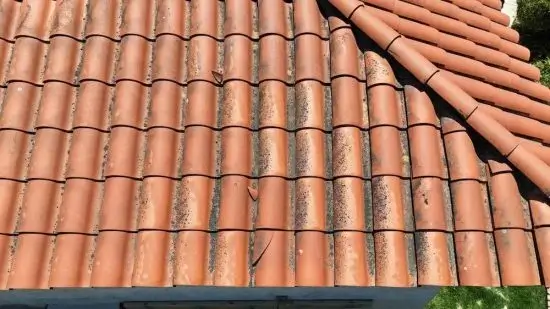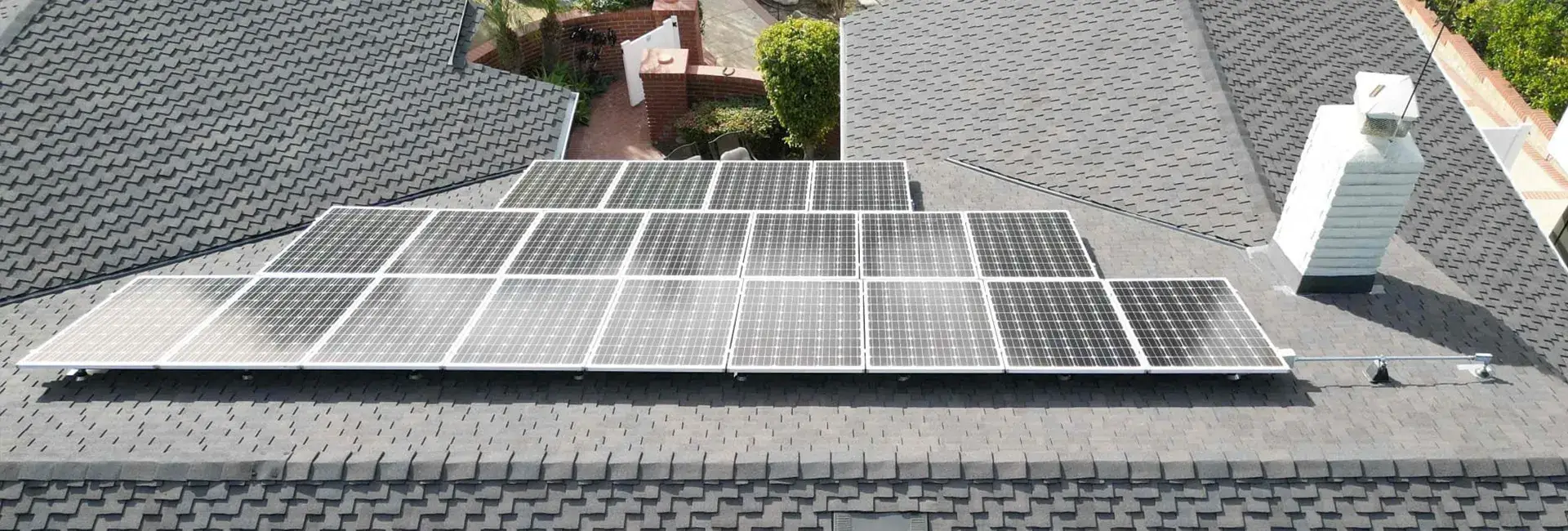1. Broken or Cracked Roof Tiles
If you have a tile roof, broken or cracked tiles are a common issue. This can happen from foot traffic, like when contractors walk on your roof, or from falling branches. Even satellite dish installations or holiday lights can cause tiles to break. When tiles crack or break, they expose the underlayment, which can lead to water damage if not addressed quickly.
What to look for:
Inspect your roof for visible tile damage, especially after heavy storms or if someone’s been up there. If you notice broken tiles, hire a roofer for roof tile replacement to prevent further damage.

2. Cracked Seals Around AC Ducts and Roof Protrusions
The seals around AC ducts, vents, and other roof protrusions can wear out over time due to weather exposure. When these seals crack, they leave your roof vulnerable to leaks. Regular maintenance includes scraping away old, weathered sealant and applying a fresh layer of mastic to ensure a strong, watertight seal around these protrusions.
What to look for:
Check for visible cracks or gaps around any roof penetrations, such as AC units or vents. If you notice areas where the sealant looks brittle, flaking, or cracked, it’s time to have the seals repaired to prevent water from entering your home.
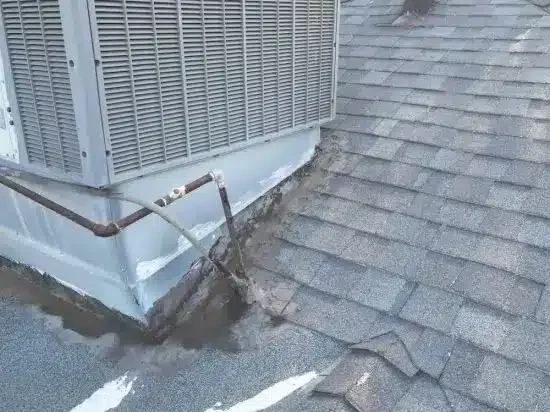
3. Debris Accumulation
This common roofing problem occurs when debris builds up in roof valleys, gutters, and around chimneys. This can cause water to pool, which eventually leads to leaks. Over time, leaves and other debris act like a sponge, soaking up water and increasing the likelihood of moisture getting into your home.
What to look for:
After the fall season or a storm, check for leaves, branches, and other debris in your gutters and roof valleys. Regular maintenance can prevent this problem from escalating into a major leak.
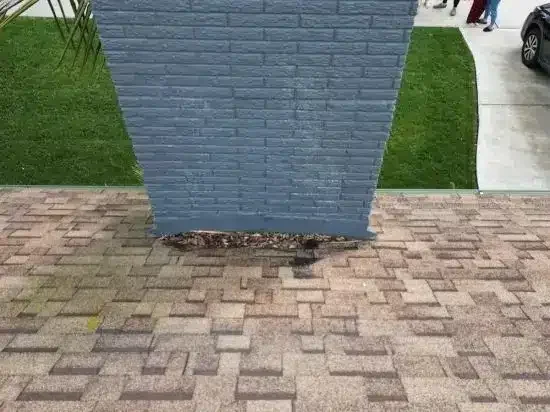
4. Shingle Wear and Tear
For those with shingle roofs, worn-out shingles are a major concern. Shingles lose granules over time, exposing the underlying fiberglass. This not only weakens the roof’s protection but can also lead to water infiltration.
What to look for:
If you see shiny, white spots on your roof, it means the granules have worn away and the fiberglass is exposed. This is a clear sign you should reach out to a professional roofer to repair or replace your shingles, especially if the damage is widespread.
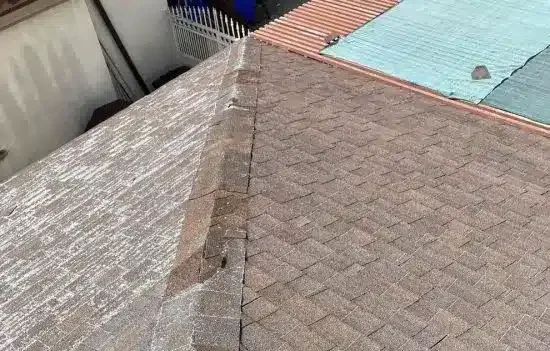
5. Leaky or Packed Roof Valleys
Roof valleys are critical areas where two roof planes meet, directing water down and off the roof. However, if these valleys become clogged with debris or the metal underneath becomes damaged, they can start to leak.
What to look for:
Inspect your roof valleys for debris or signs of wear. If water isn’t flowing freely down the valley during a rainstorm, it may be clogged or damaged, increasing the risk of leaks.
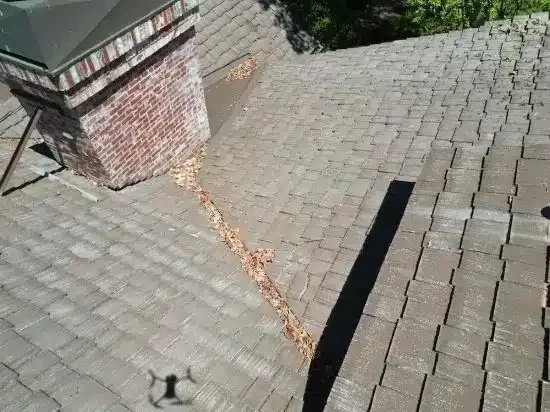
6. Ridge Cap Issues
Ridge caps, the part of the roof that covers the peak, can wear out faster than other sections, particularly in areas exposed to high winds or intense sunlight. Broken or missing ridge caps can allow water to seep in, causing significant damage to the roof structure.
What to look for:
Check the ridge of your roof for missing or broken caps. If you notice damage, a quick replacement might save you from a full roof replacement down the line.
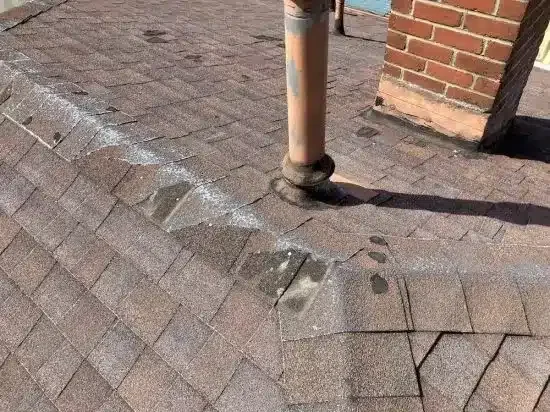
7. Slipped or Missing Tiles
Sometimes tiles may slip out of place due to poor installation, weathering, or other damage. When tiles are misaligned, the underlayment is exposed, which can speed up its deterioration.
What to look for:
If you notice tiles that have slipped or are missing, especially in high-traffic areas like near chimneys or along roof edges, it’s time to have a professional roofing company realign and secure them.
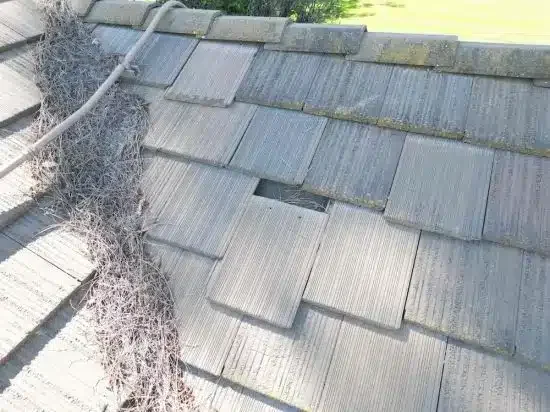
8. Algae Growth
Homeowners with tile roofs might notice algae growth, which is often mistaken for a bigger problem than it really is. While algae doesn’t damage the roof itself, it can make your roof look dirty, and some insurance companies may refuse coverage if your roof appears unmaintained.
What to look for:
If you see black or green streaks on your roof, you likely have algae growth. Power washing can remove it, but be cautious—cleaning can do more harm than good if your roof’s underlayment is weak. It’s best to consult a professional before tackling this job yourself.
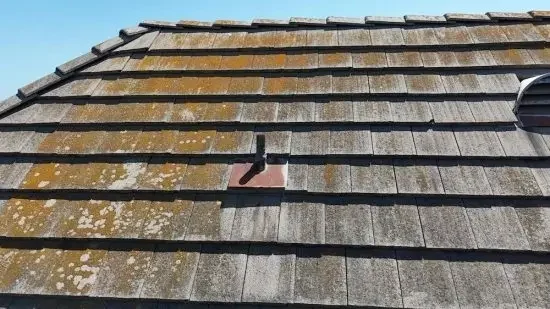
9. Weathered or Discolored Roofing
With time, roofing materials naturally weather and may become discolored from sun exposure. While this doesn’t always indicate a structural problem, severe weathering can make materials brittle, especially if your roof is older.
What to look for:
A roof that looks bleached or discolored might be past its prime. If your roofing material is outdated or starting to crumble, consider a roof replacement to avoid future issues.
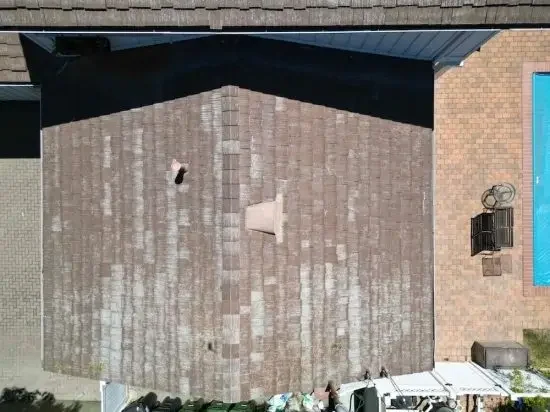
How Often Should You Check Your Roof?
Regular inspections are key to catching roofing problems before they become serious. Most experts recommend checking your roof at least twice a year—once in the spring and once in the fall. However, if your area has experienced severe weather or if your roof is older, more frequent inspections might be necessary.
What to Do Next
Taking care of your roof now can save you from more costly repairs later. Whether it’s algae growth, broken tiles, or debris buildup, staying proactive with roof maintenance will keep your home protected and extend the life of your roof. If you’re unsure about the condition of your roof, don’t hesitate to call a professional roofer like LocalRoofs for a roof evaluation. They can help spot problems you might have missed and ensure your roof remains in top shape year-round.
If you need help with a roof checkup, maintenance, or repairs, contact LocalRoofs today!
